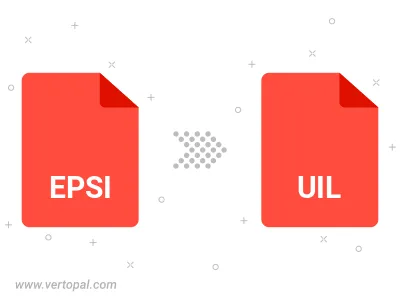Convert EPSI to UIL
Convert EPSI images to UIL format, edit and optimize images online and free.

EPSI, standing for Encapsulated PostScript Interchange, is a file extension used primarily in the printing and graphic design industries. It stores PostScript data along with a low-resolution preview in bitmap format, facilitating the visualization of graphic content in layout applications without needing to interpret the complex PostScript code. Introduced in the 1980s by Adobe Systems, EPSI files serve as a bridge between different software applications, ensuring consistent and high-quality output in various publishing workflows. Their efficiency and adaptability have made them a standard for exchange of graphic data in professional environments.
The UIL file extension stands for User Interface Language and is associated with the X-Motif UIL Table. It is a plain text file format used by the UIL compiler to create user interfaces for the X Window System. UIL files define menus, buttons, dialog boxes, and other graphical user interface components. Introduced by The Open Group, this format allows developers to describe the initial state of a user interface, including widgets, resources, and callbacks. The UIL file is compiled into a UID file, which can be accessed by Motif Resource Management functions within an application.
Select any EPSI file from your device to start uploading it.
Pick any EPSI to UIL tools if you need to edit your EPSI file, then click the Convert button.
Once the convert is complete, you can download the final UIL file.

To change EPSI format to UIL, upload your EPSI file to proceed to the preview page. Use any available tools if you want to edit and manipulate your EPSI file. Click on the convert button and wait for the convert to complete. Download the converted UIL file afterward.
Follow steps below if you have installed Vertopal CLI on your macOS system.
cd to EPSI file location or include path to your input file.Follow steps below if you have installed Vertopal CLI on your Windows system.
cd to EPSI file location or include path to your input file.Follow steps below if you have installed Vertopal CLI on your Linux system.
cd to EPSI file location or include path to your input file.